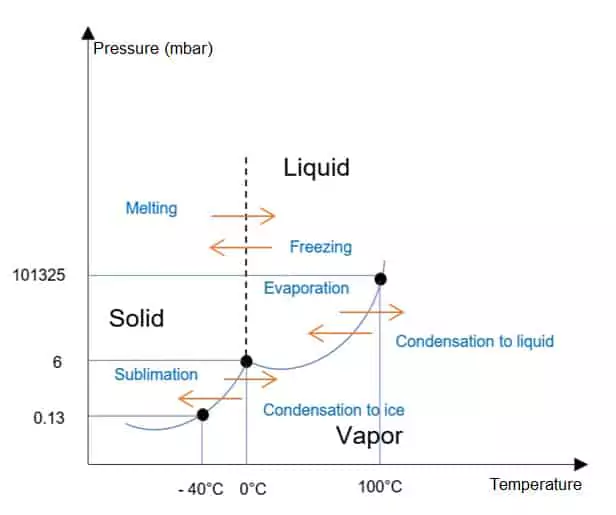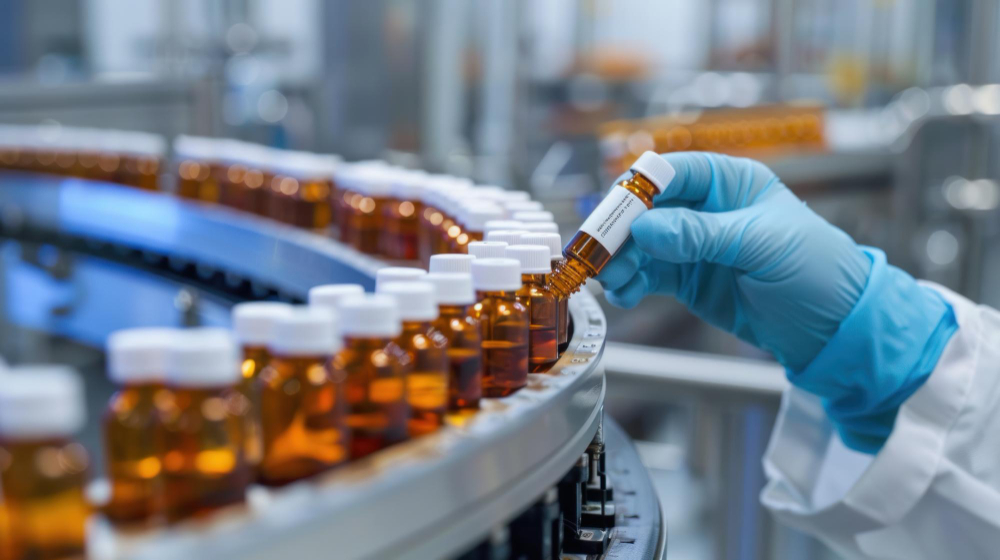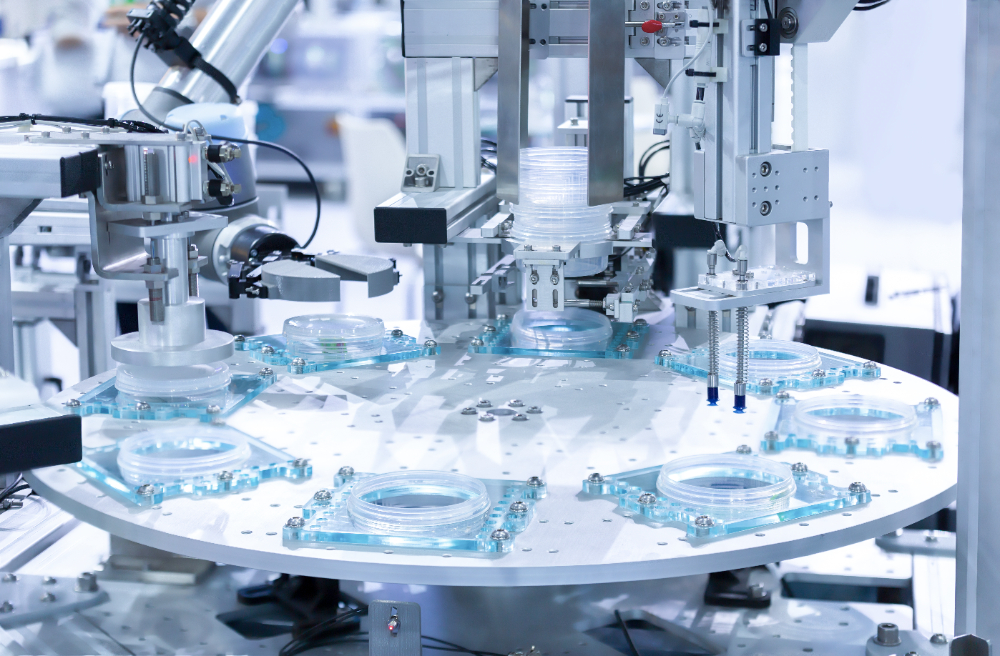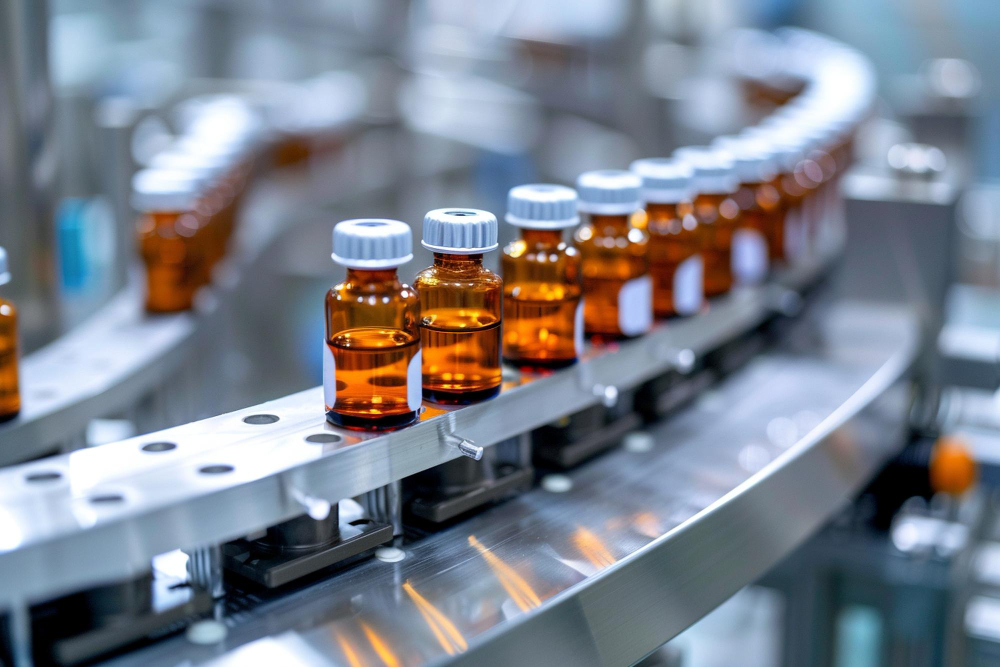প্রথমত, লাইওফিলাইজেশন কি? লাইওফিলাইজেশন, বা ফ্রিজ-শুকানো, এমন একটি প্রক্রিয়া যা ওষুধ, খাদ্য এবং অন্যান্য পণ্য সংরক্ষণ করে। এটি অক্ষত রাখার সময় পণ্যগুলি থেকে আর্দ্রতা অপসারণ করতে ব্যবহৃত হয়।
এই প্রক্রিয়ায় তাপমাত্রা খুব গুরুত্বপূর্ণ ভূমিকা পালন করে। তাপমাত্রা ঠিক না থাকলে পণ্যটি নষ্ট হয়ে যেতে পারে।
লাইওফিলাইজেশনে, পণ্যটি হিমায়িত হয়, শুকানো হয় এবং তারপর শুকানো শেষ হয়। প্রতিটি পর্যায়ে তাপমাত্রা নিয়ন্ত্রণ করা প্রয়োজন। এটি পণ্যটিকে সংরক্ষণ করতে এবং দীর্ঘ সময়ের জন্য নিরাপদ রাখতে সহায়তা করে।
এই নিবন্ধটি ব্যাখ্যা করবে যে লাইওফিলাইজেশনের প্রতিটি পর্যায়ে কী তাপমাত্রা প্রয়োজন। কেন তাপমাত্রা নিয়ন্ত্রণ এত গুরুত্বপূর্ণ তা নিয়েও আমরা কথা বলব।

একটি উচ্চ কর্মক্ষমতা এবং নির্ভরযোগ্য Lyophilization মেশিন প্রয়োজন?
লাইওফিলাইজেশন একটি পণ্য থেকে জল অপসারণ করে কাজ করে। প্রথমত, পণ্য হিমায়িত কঠিন. তারপর, হিমায়িত জল বাষ্পে পরিণত হয় এবং পণ্যটি ছেড়ে যায়। এটি পণ্যটিকে শুষ্ক রাখে এবং এটি দীর্ঘ সময়ের জন্য তাজা থাকতে সহায়তা করে।
এই প্রক্রিয়ায় তাপমাত্রা খুবই গুরুত্বপূর্ণ। এটা ঠিক হতে হবে. তাপমাত্রা খুব বেশি হলে পণ্যটি নষ্ট হয়ে যেতে পারে। এটি খুব কম হলে, পণ্য সঠিকভাবে শুকিয়ে নাও হতে পারে।
তাপমাত্রা নিয়ন্ত্রণ পণ্যের শক্তি সংরক্ষণ করতে সাহায্য করে। ওষুধ এবং ভ্যাকসিনের জন্য এটি খুবই গুরুত্বপূর্ণ, যা নিরাপদে সংরক্ষণ করা প্রয়োজন। লাইওফিলাইজেশন নিশ্চিত করতে সাহায্য করে যে পণ্যগুলি হিমায়ন ছাড়াই দীর্ঘ সময়ের জন্য সংরক্ষণ করা যেতে পারে।

লাইওফিলাইজেশনে তাপমাত্রা নিয়ন্ত্রণ পণ্যটিকে স্থিতিশীল রাখার চাবিকাঠি। তাপমাত্রা খুব বেশি হলে, এটি পণ্যটি ভেঙে যেতে পারে। উদাহরণস্বরূপ, লাইওফিলাইজেশনের সময় তাপমাত্রা খুব বেশি হলে একটি ভ্যাকসিন তার কার্যকারিতা হারাতে পারে।
তাপমাত্রা খুব কম হলে, পণ্য সঠিকভাবে শুকিয়ে নাও হতে পারে। এটি পণ্যটিতে কিছু আর্দ্রতা থাকতে পারে, যা এটিকে অস্থির করে তুলতে পারে। তাপমাত্রা সাবধানে নিয়ন্ত্রিত হলে Lyophilization সবচেয়ে ভাল কাজ করে।
যখন তাপমাত্রা সঠিকভাবে নিয়ন্ত্রণ করা হয়, তখন পণ্যটি স্থিতিশীল এবং নিরাপদ থাকে। এটি পণ্যটির কার্যকারিতা নিশ্চিত করে, এটি একটি ভ্যাকসিন, ওষুধ বা অন্য সংবেদনশীল পণ্য।
Lyophilization তিনটি প্রধান পর্যায় আছে। প্রতিটি পর্যায়ে তাপমাত্রা ভিন্ন। আসুন প্রতিটি পর্যায়ে তাপমাত্রার দিকে নজর দিন।
| মঞ্চ | তাপমাত্রা পরিসীমা | উদ্দেশ্য |
| হিমায়িত পর্যায় | -40°C থেকে -80°C (-40°F থেকে -112°F) | শুকানোর আগে পণ্যটি সম্পূর্ণরূপে হিমায়িত করুন। |
| প্রাথমিক শুকানো | -20°C থেকে -40°C (-4°F থেকে -40°F) | হিমায়িত জলকে বাষ্পে পরিণত করে বেশিরভাগ জল সরান। |
| সেকেন্ডারি শুকানো | 20°C থেকে 30°C (68°F থেকে 86°F) | অবশিষ্ট আর্দ্রতা সরান এবং পণ্য স্থিতিশীল. |
| চূড়ান্ত শুকানো | 20°C থেকে 30°C (68°F থেকে 86°F) | স্থিতিশীল স্টোরেজ জন্য আর্দ্রতা শেষ বিট সরান. |
হিমায়িত পর্যায়ে, পণ্য হিমায়িত হয়। পণ্যটি সম্পূর্ণ হিমায়িত হয়েছে তা নিশ্চিত করতে তাপমাত্রা খুব কম। হিমায়িত তাপমাত্রা সাধারণত -40°C এবং -80°C (-40°F থেকে -112°F) এর মধ্যে থাকে। এটি শুকানোর জন্য পণ্য প্রস্তুত করে।
প্রাথমিক শুকানোর পর্যায়ে, বেশিরভাগ জল পণ্য থেকে সরানো হয়। এই পর্যায়ে তাপমাত্রা কিছুটা বাড়ানো হয়, সাধারণত -20°C এবং -40°C (-4°F থেকে -40°F) এর মধ্যে। এটি হিমায়িত জলকে বাষ্পে পরিণত করতে সহায়তা করে। জল চলে যাওয়ার সাথে সাথে পণ্যটি শক্ত এবং অক্ষত থাকে।
পরবর্তী পর্যায়ে সেকেন্ডারি শুকানো হয়। এই পর্যায়ে, অবশিষ্ট আর্দ্রতা পণ্য থেকে সরানো হয়। তাপমাত্রা আরও বেশি বাড়ানো হয়, সাধারণত 20°C এবং 30°C (68°F থেকে 86°F) এর মধ্যে। এটি নিশ্চিত করে যে পণ্যটি সম্পূর্ণ শুকনো এবং স্টোরেজের জন্য স্থিতিশীল।
প্রাথমিক শুকানোর পরে, এখনও অল্প পরিমাণে আর্দ্রতা অবশিষ্ট রয়েছে। চূড়ান্ত শুকানোর পর্যায় এই শেষ বিট আর্দ্রতা সরিয়ে দেয়। এই পর্যায়ে তাপমাত্রা 20°C থেকে 30°C (68°F থেকে 86°F) এর মধ্যে উন্নীত হয়। এই পদক্ষেপটি নিশ্চিত করে যে পণ্যটি সম্পূর্ণ শুকনো এবং স্টোরেজের জন্য স্থিতিশীল।
লাইওফিলাইজেশনের সময় তাপমাত্রা নিয়ন্ত্রণ পণ্যের গুণমানের জন্য খুবই গুরুত্বপূর্ণ। তাপমাত্রা খুব বেশি হলে, এটি পণ্যের সক্রিয় উপাদানগুলিকে ধ্বংস করতে পারে। এটি পণ্যটিকে কম কার্যকর বা এমনকি ব্যবহার করা বিপজ্জনক করে তুলতে পারে।
তাপমাত্রা খুব কম হলে, এটি পণ্যটিকে সঠিকভাবে শুকানো থেকে আটকাতে পারে। কিছু আর্দ্রতা পণ্যে থেকে যেতে পারে, যা সময়ের সাথে সাথে এটি ভেঙে যেতে পারে। তাপমাত্রা নিয়ন্ত্রণ নিশ্চিত করে যে পণ্যটি সঠিকভাবে শুকানো হয় এবং কার্যকর থাকে।
তাপমাত্রা সঠিক স্তরে রেখে, লাইওফিলাইজেশন ওষুধ এবং অন্যান্য পণ্য সংরক্ষণে সহায়তা করে। এটি নিশ্চিত করতে সহায়তা করে যে পণ্যটি দীর্ঘ সময়ের জন্য কার্যকর এবং নিরাপদ থাকে। উদাহরণস্বরূপ, ভ্যাকসিনগুলি কার্যকর থাকার জন্য সঠিক তাপমাত্রায় থাকতে হবে।
লাইওফিলাইজেশনে তাপমাত্রা নিয়ন্ত্রণ করা কঠিন হতে পারে। তাপমাত্রার ছোট পরিবর্তন বড় প্রভাব ফেলতে পারে। উদাহরণস্বরূপ, প্রাথমিক শুকানোর সময় তাপমাত্রা খুব বেশি হলে, এটি পণ্যটি গলে যেতে পারে। এটি খুব কম হলে, পণ্য সঠিকভাবে শুকিয়ে নাও হতে পারে।
তাপমাত্রা নিয়ন্ত্রণের জন্য প্রস্তুতকারকদের ভাল সরঞ্জাম প্রয়োজন। সরঞ্জামগুলি অবশ্যই তাপমাত্রা নিবিড়ভাবে পর্যবেক্ষণ করতে এবং প্রয়োজন অনুসারে এটি সামঞ্জস্য করতে সক্ষম হতে হবে। প্রক্রিয়া চলাকালীন পণ্যটি যাতে নষ্ট না হয় তা নিশ্চিত করার জন্য এটি গুরুত্বপূর্ণ।
প্রযুক্তি লাইওফিলাইজেশনের সময় তাপমাত্রা নিয়ন্ত্রণ করা সহজ করে তুলেছে। আধুনিক লাইওফিলাইজারগুলি সেন্সরগুলির সাথে আসে যা রিয়েল টাইমে তাপমাত্রা পরিমাপ করে। এই সেন্সরগুলি সঠিক স্তরে থাকে তা নিশ্চিত করতে স্বয়ংক্রিয়ভাবে তাপমাত্রা সামঞ্জস্য করতে পারে৷
এই অগ্রগতিগুলি প্রক্রিয়াটিকে দ্রুত এবং আরও নির্ভুল করতে সহায়তা করে। নতুন লাইওফিলাইজারগুলি সময় এবং অর্থ বাঁচাতেও সহায়তা করে। আরও ভাল সরঞ্জাম সহ, তাপমাত্রা নিয়ন্ত্রণ আরও দক্ষ এবং কার্যকর।
প্রযুক্তির উন্নতির সাথে সাথে লাইওফিলাইজেশন আরও বেশি দক্ষ হয়ে উঠবে। ভবিষ্যতে, আমরা তাপমাত্রার উপর আরও সুনির্দিষ্ট নিয়ন্ত্রণ আশা করতে পারি, যা আরও ভাল পণ্য সংরক্ষণের দিকে পরিচালিত করবে।
তাপমাত্রা নিয়ন্ত্রণ লাইওফিলাইজেশনের অন্যতম গুরুত্বপূর্ণ অংশ। এটি পণ্য সংরক্ষণ করতে সাহায্য করে এবং এটি কার্যকর থাকে তা নিশ্চিত করে। প্রতিটি পর্যায়ে তাপমাত্রা নিয়ন্ত্রণ করে — হিমাঙ্ক, প্রাথমিক শুকানো এবং সেকেন্ডারি শুকানোর — নির্মাতারা নিশ্চিত করতে পারেন যে পণ্যটি নিরাপদ এবং স্থিতিশীল।
আপনি যদি আপনার লাইওফিলাইজেশন প্রক্রিয়া উন্নত করার জন্য নির্ভরযোগ্য সরঞ্জাম খুঁজছেন, কানন উচ্চ মানের সমাধান আছে। আমাদের সরঞ্জাম সঠিকভাবে তাপমাত্রা নিয়ন্ত্রণ এবং আপনার পণ্য সংরক্ষণ করতে সাহায্য করে. আমাদের পণ্য সম্পর্কে আরও জানুন পরিদর্শন করে আমাদের ওয়েবসাইট বা যোগাযোগ হচ্ছে আমাদের সাথে

কানানের সমস্ত উচ্চ-কর্মক্ষমতা সম্পন্ন লাইওফিলাইজেশন মেশিন আবিষ্কার করুন।




ওষুধ উৎপাদনকে সর্বদা গুরুত্ব সহকারে নেওয়া উচিত। অর্থাৎ, প্রতিটি প্রক্রিয়া কঠোরতম এবং সর্বোচ্চ মান অনুসরণ করতে হবে। এই কারণেই নির্মাতারা EPC ঠিকাদার নিয়োগ করতে পছন্দ করেন। EPC চুক্তির অধীনে কাজ করা ঠিকাদাররা নিশ্চিত করবেন যে ফলাফল যাই ঘটুক না কেন সর্বোত্তম মানের হবে, […] নির্মাণের উপর মনোযোগ দেবেন।

ওষুধ উৎপাদনে EPC চুক্তির গুরুত্ব অন্বেষণ করুন। EPC কীভাবে কাজ করে, এর সুবিধাগুলি এবং কেন একজন EPC ঠিকাদার নির্বাচন করা কানানের শিল্প-নেতৃস্থানীয় সরঞ্জামগুলির সাথে প্রকল্পের সাফল্যের নিশ্চয়তা দিতে পারে তা জানুন।

SCADA এবং PLC কীভাবে ওষুধ শিল্পে অটোমেশন উন্নত করে তা আবিষ্কার করুন। তাদের ভূমিকা, সুবিধা এবং কীভাবে কানানের উন্নত প্রযুক্তি দক্ষতা এবং সুরক্ষা বাড়ায় তা জানুন।